
The use of a quality air filter element should be unquestioned when it comes to protecting a street-driven engine. With an overabundance of filters on the market, how do we know which one to choose? The choice may be as simple as installing the manufacturer’s recommended filter, but could there be something better? What about performance filters, better filtration media designs, and cost considerations? To determine which filter would be the best fit for our 2006 5.7-liter Charger, we selected twelve drop-in air filter elements for an extensive series of tests. The filters ranged from the economy paper media filters to the performance-oriented non-woven synthetic cotton media filters.
We purchased eleven new air filters from three local auto parts stores and a Dodge/RAM dealer. The twelfth filter was a used Mopar Police Package OEM filter (with 20K miles on it) installed before purchasing the Charger. We selected an R/T OEM Mopar filter and filters from Fram, STP, Luber-Finer, Purolator, Drive Works, Spectre, K&N, and three Napa filters. The costs ranged from under $10 to nearly $40; ten of the filters were under $25. Of the filters, ten were paper media, and two were non-woven synthetic cotton media. The filters were manufactured in the USA, China, or Mexico.
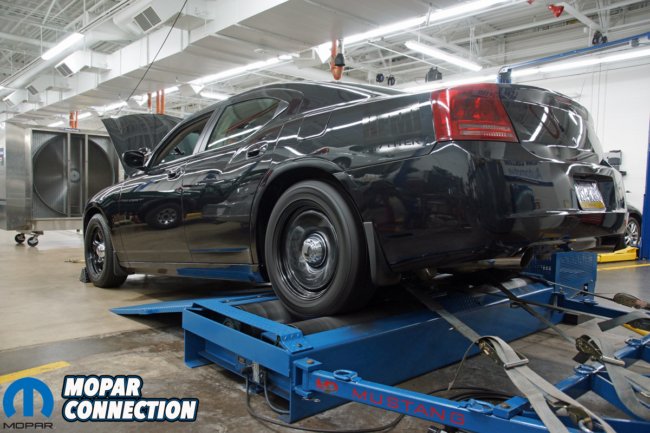
Above: Our retired 2006 Police Package 5.7L Hemi Charger was used to evaluate drop-in air filter elements. The 5.7L made 78 WOT chassis dyno runs (Power Curve and 3rd Gear Acceleration) to establish the performance portion of the testing to help determine the “best” filter. Because we usually run our Charger with the DiabloSport 87-octane “Mileage Tune,” that is the tune we used for all the testing.
The evaluation tests ranked each filter based upon:
- Retail cost
- Peak torque
- Peak horsepower
- Average torque
- Average horsepower
- Cubic Feet per Minute (CFM) of airflow at 1.5 inches of water
- Average CFM from 0.25 inches of water to 1.5 inches of water
- The elapsed time (in seconds) required to accelerate at wide-open throttle (WOT) in 3rd gear from 70–110mph
Evaluations 2, 3, 4, 5, and 8 would be performed on a Mustang Chassis dyno, and evaluations 6 and 7 would be tested on a SuperFlow flow bench. The filters would be graded in each category with a point value from first to twelfth. First would be the best in that category and represented by a single point. Twelfth would be the worst in that category and would be assigned twelve points. The filters in between would be given points based upon their ranking in each category. Each filter’s points would be added together and divided by eight to determine the filter’s overall score. The lowest average score would be considered the winner, and the highest average score would be last.
With the scoring criteria explained, it was time for some chassis dynamometer air filter comparison testing. We used our completely stock Charger for several long-distance trips that necessitated a more fuel-efficient tune from our DiabloSport tuner. With our desire to use less expensive 87-octane fuel, we installed a “Mileage Tune” to the factory PCM. With 87-octane fuel in the tank on the day of the test, we strapped the Charger to a Mustang chassis dynamometer to start our evaluations.
Above Left: The location of the Charger’s air filter box made the element swaps a breeze. After un-clipping two plastic housing clips and rotating the top half of the box forward, the filter was quickly removed. Above Center: With the clips unclasped, the flexible inlet hose allowed the top half of the air filter box to fold out of the way. Above Right:We used a flow bench to measure the cubic feet per minute (CFM) of airflow through each filter. The filter housing was attached to a wooden and acrylic adapter. We designed a manometer with a clear tube and a cardboard backer with graduated marks.
We made three power curve (dyno) runs on each filter from 2500–5500 RPM, and after the runs, we noted the performance results. All three runs of each filter were required to be within 1% of each other (peak torque and horsepower (hp)) to verify the test’s legitimacy. During the test session, the dynamometer room temperature ranged from 71.9–72.7°F. The humidity varied from 12.7–14.1%, and there was a slight movement in barometric pressure from 29.97–30.01 inHg.
We utilized the Mustang Dyno’s weather correction factor (WCF) to adjust every run to the Society of Automotive Engineers (SAE) J607 standard (60°F, 29.29inHg, and 0% humidity). Additionally, we monitored the Charger’s engine and driveline temperatures (engine coolant temp (ECT), intake air temp (IAT), transmission fluid temp (TFT), differential case temperature, and tire temps) for the entire test series.
Above Left: We tapped the manometer to the air box’s PCV fresh-air fitting. The CFM was measured from 0- to 2.0-inches of water. We noted the average between 0.25- to 1.5-inches and the maximum flow at 1.5-inches. Above Right: The air filter element retail prices ranged from just under $8.50 to $40. Ten of the filters were less than $25, and three were less than $10. The Fram filter won this category.
We established a baseline with our OEM Mopar Police Package filter, and it provided middle-to-bottom of the group performance when all twelve filter evaluations were completed. It delivered 308.7 lb-ft of torque and 282.8 horsepower (all rear-wheel numbers). The average torque and horsepower produced was 293.1 lb-ft and 272.2 hp. The Luber Finer produced the best peak torque at 316.2 lb-ft, which was 7.5 lb-ft better than the worst filter (Mopar Police Package filter).
The Spectre filter’s 286.9 horsepower outpaced the field and was 5.5 hp better than the last filter (NAPA Gold). The average torque and the average horsepower champion was the Drive Works filter. It had an average torque of 296.7 lb-ft, and the average horsepower was 274.7 hp. The average numbers improved five lb-ft of torque compared to the twelfth-place filter (Mopar R/T filter) and 4.4 horsepower over the lowest-performing filter (NAPA Silver).
Above Left: The filter peak torque difference between the best and worst filter was almost 7.5 lb-ft of torque. The Luber-Finer filter finished first with 316.217 lb-ft of torque, and the 20K-mile used Mopar filter finished in the last position. Above Right: The Spectre filter outpaced the group of filters for the best peak horsepower at 286.863 horsepower. It bettered the 2nd place filter by almost one horsepower, and the range from first to the last place NAPA Gold filter was nearly 5.5 horsepower.
After each filter’s power curves, we ran a series of WOT acceleration runs from 70–110 mph. These runs were all performed in 3rd gear. The Spectre filter rolled the 40 mph in 8.80 seconds, which was 0.09 seconds quicker than the 2nd place Drive Works filter. The STP filter performed worst in the acceleration test with an elapsed time of 9.101 seconds.
After 78 dyno runs (39 power curves and 39 acceleration tests) were completed, the testing moved to the SuperFlow flow bench to evaluate each filter’s airflow capabilities measured in CFM. We removed the Charger’s airbox and mounted it onto a wooden fixture that we sealed to the flow bench’s inlet. A “homemade” manometer consisting of a water-filled clear hose affixed to a cardboard backer provided the pressure drop measurement.
Above Left: The average torque between the best and worst filter was nearly five lb-ft. The Drive Works filter was the best at 296.796 lb-ft of torque, and the OEM Mopar R/T filter finished last. Above Right: Out of all the power curve dyno runs, the average horsepower was the tightest, with a range of 4.4 horsepower between first and last. The Drive Works filter again topped the class with an average horsepower of 274.734 hp. The NAPA Silver filter finished last.
We attached the manometer hose to the airbox PCV nipple. The cardboard backer had a series of graduation marks placed in ¼-inch increments from 0- to 2-inches of water. We set the manometer water level to 0-inches, which represented no pressure drop in a static position. As the air flowed through the air box, the manometer’s water would climb up the hose.
Although we could test up to 2-inches, we elected to note the maximum performance limit of flow at 1.5-inches of water pressure drop. We performed two CFM tests on each filter; the first was a full flow at 1.5 inches of water, and the second was the average CFM over the range of 0.25- to 1.5-inches of water.
The Spectre filter flowed the most CFM at 1.5-inches of water with an airflow rating of 510.7 CFM. The K&N filter was first for the overall average CFM from 0.25- to 1.5-inches of water with a flow of 451.3 CFM. The K&N filter’s CFM flow numbers at the low water depression numbers (0.25- to 0.50-inches of water) were more than 25 CFM greater than the next filter. For comparison, the OEM Mopar baseline filter flowed 483.18 CFM at 1.5-inches of water and averaged 410.11 CFM from 0.25- to 1.5-inches of water.
Above Left: The Spectre filter won the 70-110 mph 3rd gear acceleration test with a best of 8.80 seconds. The STP filter brought up the rear of the class with a 9.10 second-best run. Above Right: Each filter was evaluated for its airflow characteristics. The Spectre filter flowed 510.69 CFM of air to take the win in the category. The Purolator filter was limited to 443.72 CFM to earn the last place.
After all the testing, which filter was the winner? Based on the test scoring parameters, the Spectre and the Drive Works filters tied for the best filter performance, airflow, and cost. However, one area of each filter could not be accurately tested – particulate filtration measured in microns.
A few websites have been listed to provide filtration data without access to the proper (expensive) test equipment to compare one filter’s filtration abilities to another. While not every filter in this series of tests is listed on these various websites, the type of testing required and some filtration results are available. It should be noted that each filter tested on the Charger met the ISO 5011 standards for automotive air filter filtration, and each filter manufacturer claimed to have filtration capabilities in the range of 96+% up to 99+%.
The testing showed a difference between the best and worst of the twelve filters was 7.5 lb-ft of peak torque and 5.5 peak horsepower. Was there a superior filter design? No, of the 1st place filters, one filter was a paper media design, while the other was non-woven cotton. Were the most expensive filters the best? In many cases, the least costly filters were just as competitive as the pricey filters. For additional information, refer to each detailed filter description in the photo captions and then shop for your desired performance.




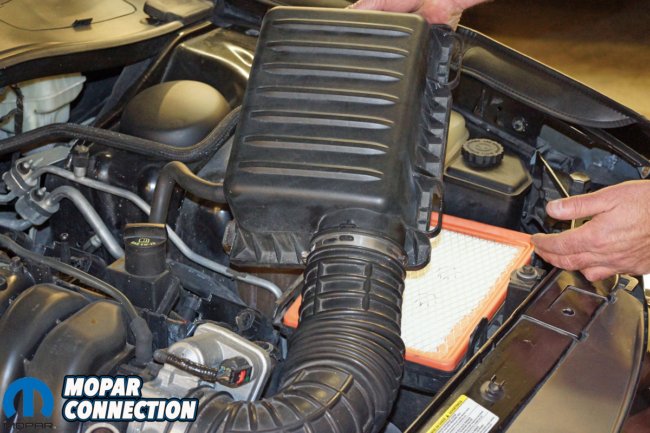
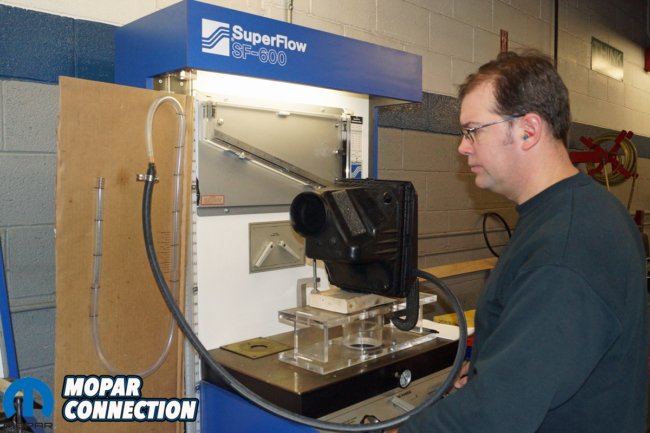


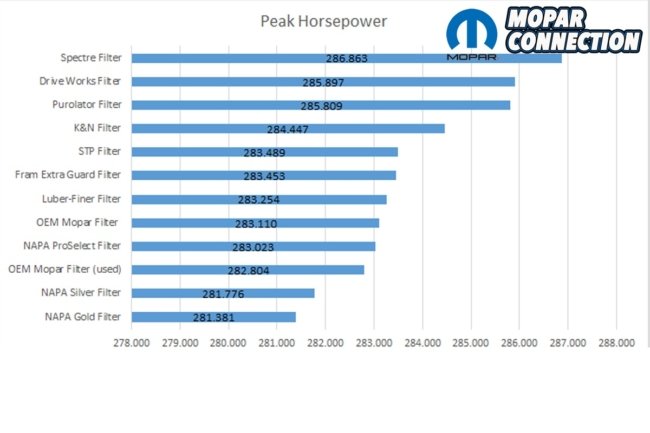

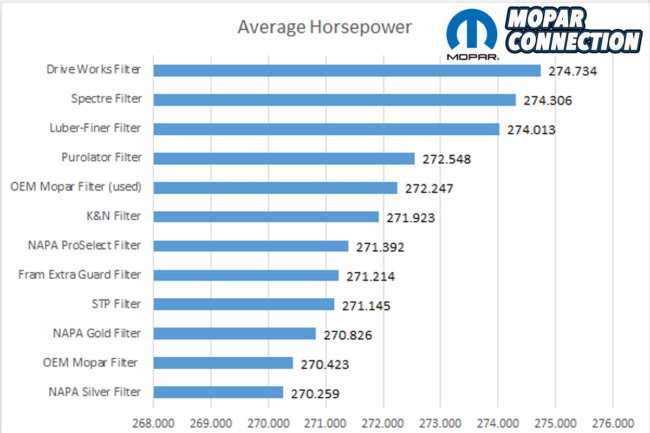
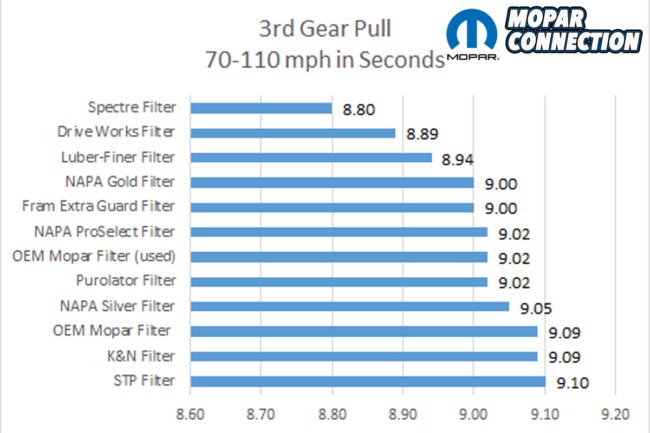
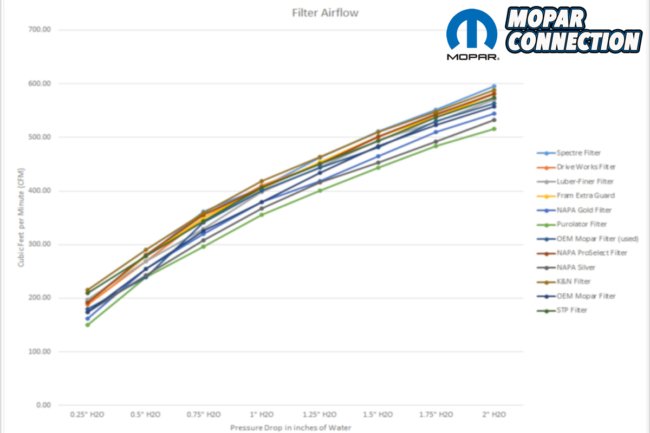
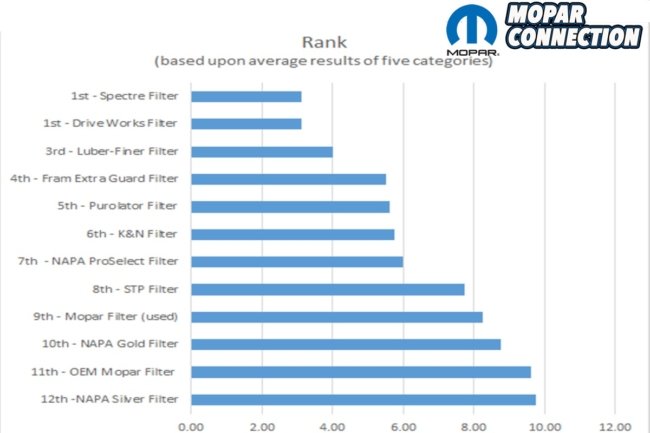




































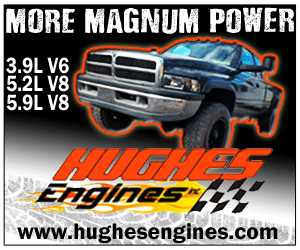

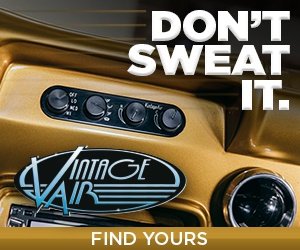


very comprehensive test thank you!
Hi Chris: Good article. One additional consideration to your filter study, that might be of interest to some readers, are the filtration efficiency numbers of each filter. End of the day, for most diyer’s protecting their engines from particulate is of great concern.
Would love to see an in-depth study on which cold air intake system makes a difference. Most that I’ve seen are absolutely terrible, sucking in hot air from the engine bay.
Thx!
Wade
Wade, the magazine has a CAI dyno test in the works on another Charger, but with similar options as the police car. It will include a baseline, the CAI test, a CAI tune test, and for fun, a closed hood “hot air intake test.” To be fair, the dyno cooling fan only puts out about 30 mph of air, but even with that you will be surprised at the performance. Stay Tuned…
I have a 17 Scat Pack Charger. I’d love to see a comparison of the stock airbox to the Hellcat airbox. That is a much cheaper swap than the cold air intakes, and I understand there are hp gains to be found by doing the swap. An analysis like this would be appreciated.